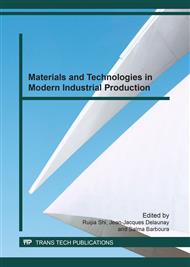p.47
p.51
p.56
p.60
p.65
p.71
p.76
p.80
p.85
Roof Forms and Materials for Energy Saving in Thailand
Abstract:
A roof is one of the most important characteristics of Thai architecture especially, a traditional Thai house. The roof is also a part of a house that mainly affects energy saving due to hot air allowance pass to and release from indoor space. The study, based on model experiments, aims to find out the effect of roof forms and materials on indoor air temperatures. This study purposes to give information of selecting types of roof forms and materials for a house in Thailand. Four types of roof forms, typically used in a house in Thailand, are selected for the experiments. Also, four roof materials, popularly used in Thailand, are selected for comparisons. Temperatures in the middle of the boxes are recorded for analysis.The results for the roof forms experiment showed that the temperature in the flat roof box is the highest in the middle of the day. However, it dropped fastest in night-time. During the daytime, temperatures in the box of the other roof forms are not much different, while the temperatures in the gable roof model dropped likely faster than the rest. The roof materials study shown that the indoor temperatures of the clay tile and metal sheet are lowest during the daytime and there are highest during the nighttime. The indoor temperatures of the cement tile are highest during the day time and there are lowest during the nighttime. This study provides the basic guideline information for the users in considering roof forms and materials for their house.
Info:
Periodical:
Pages:
80-84
Citation:
Online since:
March 2017
Authors:
Keywords:
Price:
Сopyright:
© 2017 Trans Tech Publications Ltd. All Rights Reserved
Share:
Citation:


